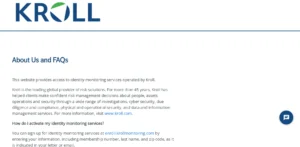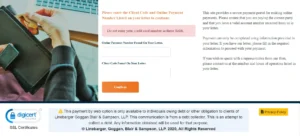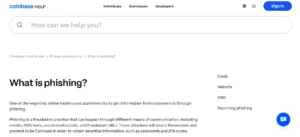Have you ever received a text message that looked like it came from your bank? It might have asked you to click on a link or give personal details. If so, you might have been targeted by a scam.
Recently, many people have reported receiving fake texts claiming to be from Halsted Financial. These messages try to trick you into sharing private information like passwords or account numbers.
This blog will help you learn how to spot these scams, stay safe online, and protect yourself from fraudsters.
Key Takeaways
Here are some important things you need to know about Halsted Financial text scams:
- Do not trust every text you get. Scammers often pretend to be trusted companies like banks or financial institutions.
- Never click on links in suspicious texts. These links can lead to fake websites designed to steal your information.
- Protect your personal details. Never share sensitive information like passwords or Social Security numbers through text messages.
- Report fake texts immediately. Use tools on your phone to block and report suspicious messages.
- Stay calm if you get a scam message. Fraudsters want to scare you into acting quickly. Take your time to verify the sender before doing anything.
- Learn how scammers work. Understanding their tricks can help you avoid falling for them.
These tips will help you stay one step ahead of scammers. Now let us dive deeper into each topic.
What is a Halsted Financial Text Scam?
A Halsted Financial text scam happens when someone pretends to be from Halsted Financial and sends you a fake message. The goal is to trick you into giving away private information. For example, they might say there is a problem with your account and ask you to click a link.
Do not fall for it. These messages are not real. Scammers often use names of real companies to make their texts look official. They hope you will panic and act without thinking. Always remember that no bank will ask for sensitive details over text.
To spot a scam, check the sender’s number. Real companies usually send messages from official accounts. If the number looks strange or has random digits, do not trust it. Also, watch out for spelling mistakes or odd language in the text. These are common signs of a scam.
If you are unsure about a message, call your bank directly. Use the number on their official website, not the one in the text. This way, you can confirm whether the message is real or fake.
How Do Scammers Impersonate Halsted Financial?
Scammers are smart. They know how to make their messages look convincing. For instance, they might claim that your account has been locked or that there was unusual activity. They may even include your name to make it seem more personal.
Be careful. These tricks are designed to scare you. Fraudsters want you to act fast without thinking. Always take a moment to pause and think before responding. Remember that real companies will never rush you into giving out private information.
Another trick scammers use is sending links that look real. These links might take you to a fake website where you are asked to enter your login details. Once you do, they steal your information. To avoid this, hover over the link (if possible) to see where it leads. If it does not match the company’s official website, do not click it.
Why Are These Scams Dangerous?
Fake texts from Halsted Financial can cause big problems. If you give away your personal information, scammers can use it to steal your identity. They might access your bank account or open new accounts in your name. This can ruin your credit score and cost you money.
Protect yourself. Always double-check the sender and avoid clicking on unknown links. If you think you have shared sensitive information, contact your bank right away. They can help you secure your account and prevent further damage.
Another danger is malware. Some links in scam texts install harmful software on your phone. This software can track your activity or steal data. To stay safe, keep your phone updated and use antivirus apps if available.
How to Identify a Fake Halsted Financial Text
There are several ways to tell if a text is fake. First, check the sender’s number. Real companies use official accounts, not random numbers. Second, look for spelling or grammar mistakes. Scammers often make errors that real companies would never allow.
Pay attention to the tone. Fake texts often sound urgent or threatening. They might say things like “Your account will be closed” or “Immediate action required.” Real companies are polite and professional. Lastly, avoid clicking on links unless you are sure they are safe. Hover over the link to see its destination. If it does not match the company’s website, do not click it.
If you are still unsure, contact Halsted Financial directly. Use their official contact information to verify the message. This simple step can save you from a lot of trouble.
What Should You Do If You Fall for a Scam?
If you accidentally respond to a scam text, do not panic. The first thing you should do is change your passwords immediately. Start with your bank account and any other accounts linked to the information you shared.
Act quickly. Notify your bank as soon as possible. Explain what happened and ask them to monitor your account for suspicious activity. Many banks have systems in place to detect and stop fraud.
You should also check your credit report for any unusual activity. If you notice something strange, report it to the authorities. Taking these steps can help minimize the damage and protect your finances.
How to Block and Report Scam Texts
Most phones have built-in features to block and report unwanted messages. If you receive a fake text, block the sender right away. This prevents them from contacting you again.
Use reporting tools. Many messaging apps let you report spam or phishing attempts. These reports help companies identify and stop scammers. You can also report scam texts to your phone carrier or local authorities.
Remember, reporting scams is important. It helps protect others from falling victim to the same tricks. By taking action, you contribute to making the online world safer for everyone.
How to Educate Friends and Family About Scams
One of the best ways to fight scams is by spreading awareness. Talk to your friends and family about the dangers of fake texts. Share examples of scams and explain how they work.
Teach them what to look for. Show them how to spot suspicious messages and encourage them to question anything that seems off. Remind them never to share personal information over text.
You can also suggest they sign up for scam alerts. Many organizations send updates about new scams and how to avoid them. By staying informed, everyone can better protect themselves from fraud.
Frequently Asked Questions
What Should I Do If I Get a Fake Text?
If you receive a fake text, do not respond or click any links. Instead, block the number and report it as spam. You can also notify your bank to ensure your account is safe.
Can Scammers Really Steal My Money?
Yes, scammers can steal your money if you give them your account details. They might drain your account or use your information to commit fraud. Always keep your details private.
How Can I Protect My Phone From Scams?
To protect your phone, update it regularly and use security apps. Avoid downloading apps from unknown sources, and be cautious about sharing personal information online.














